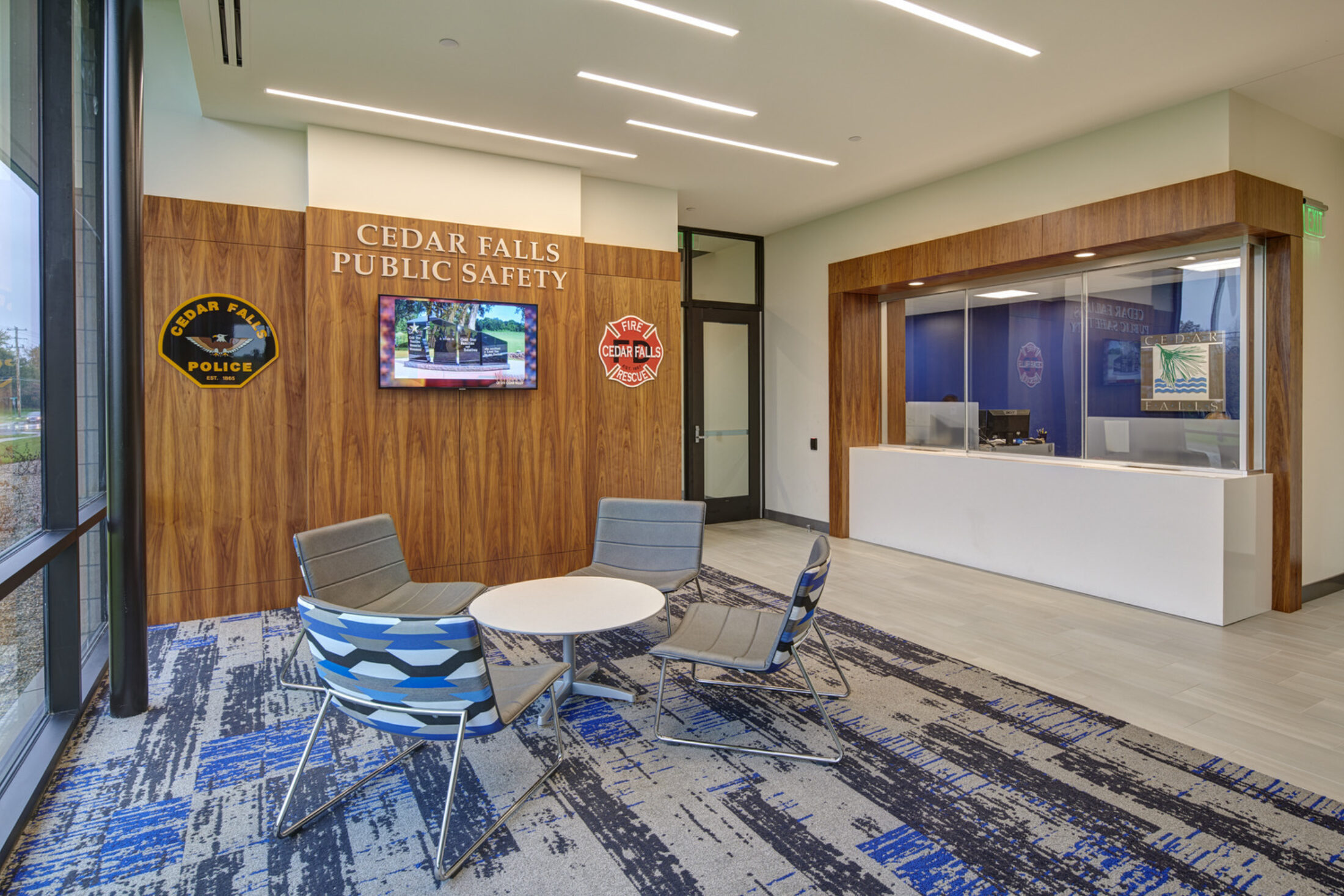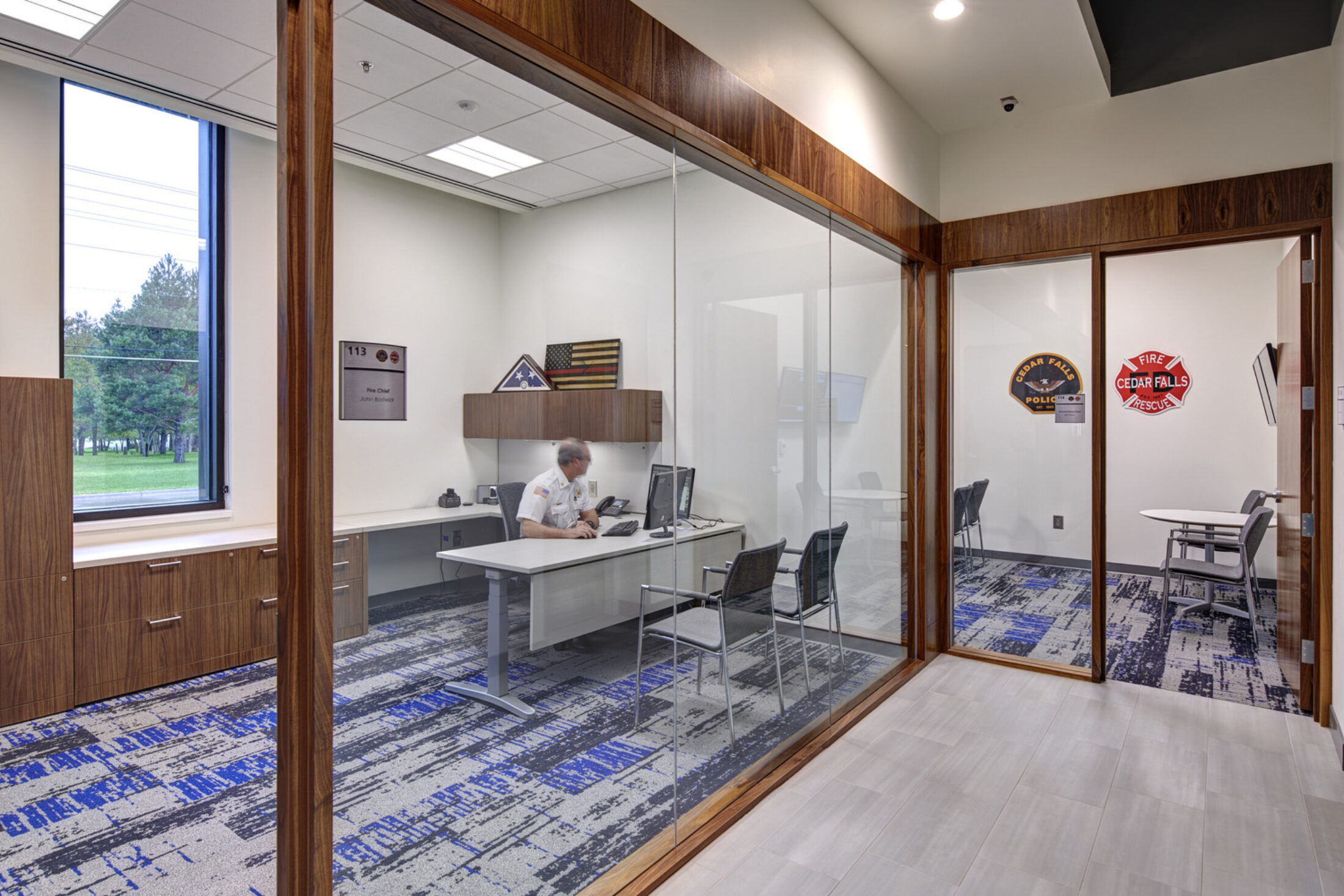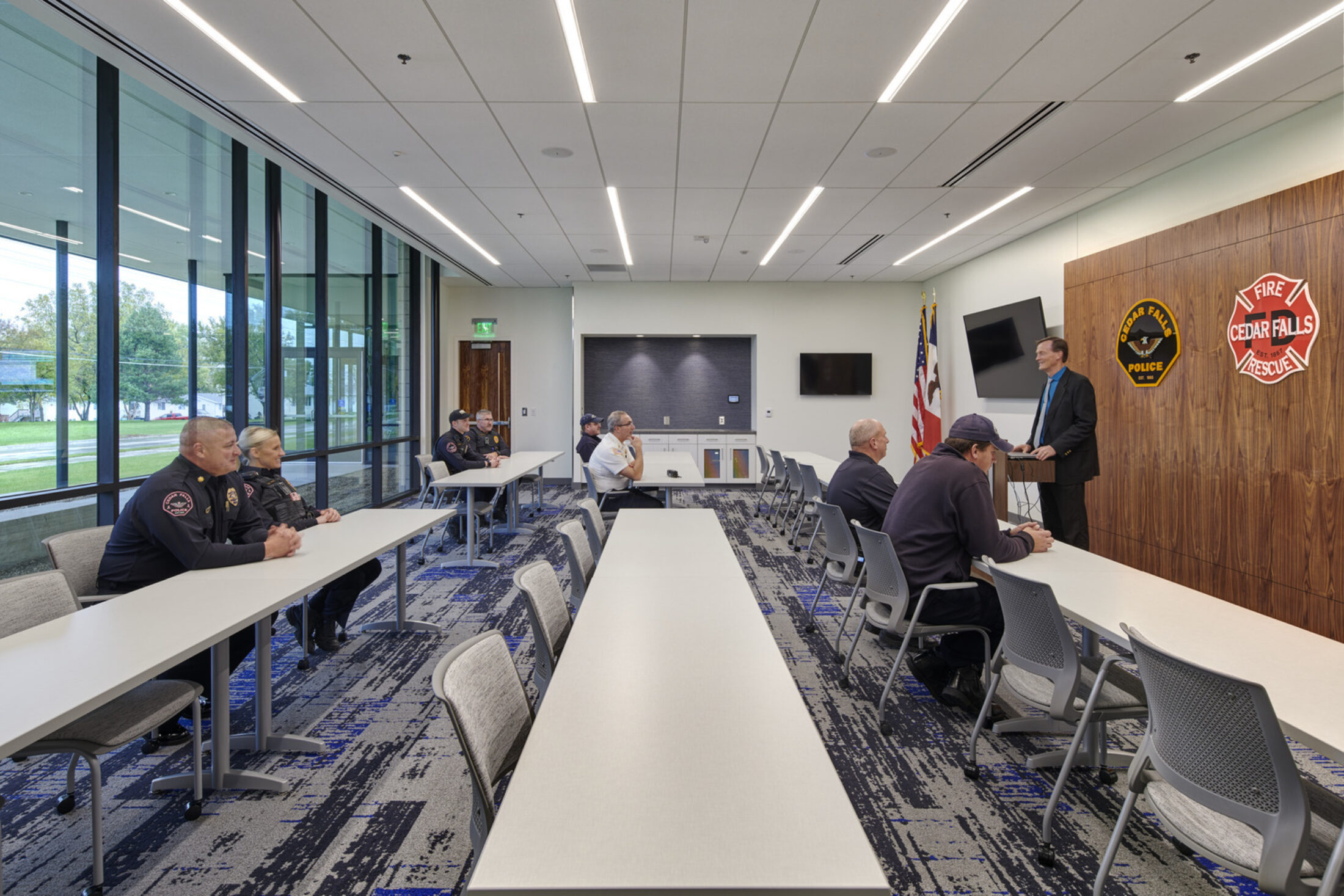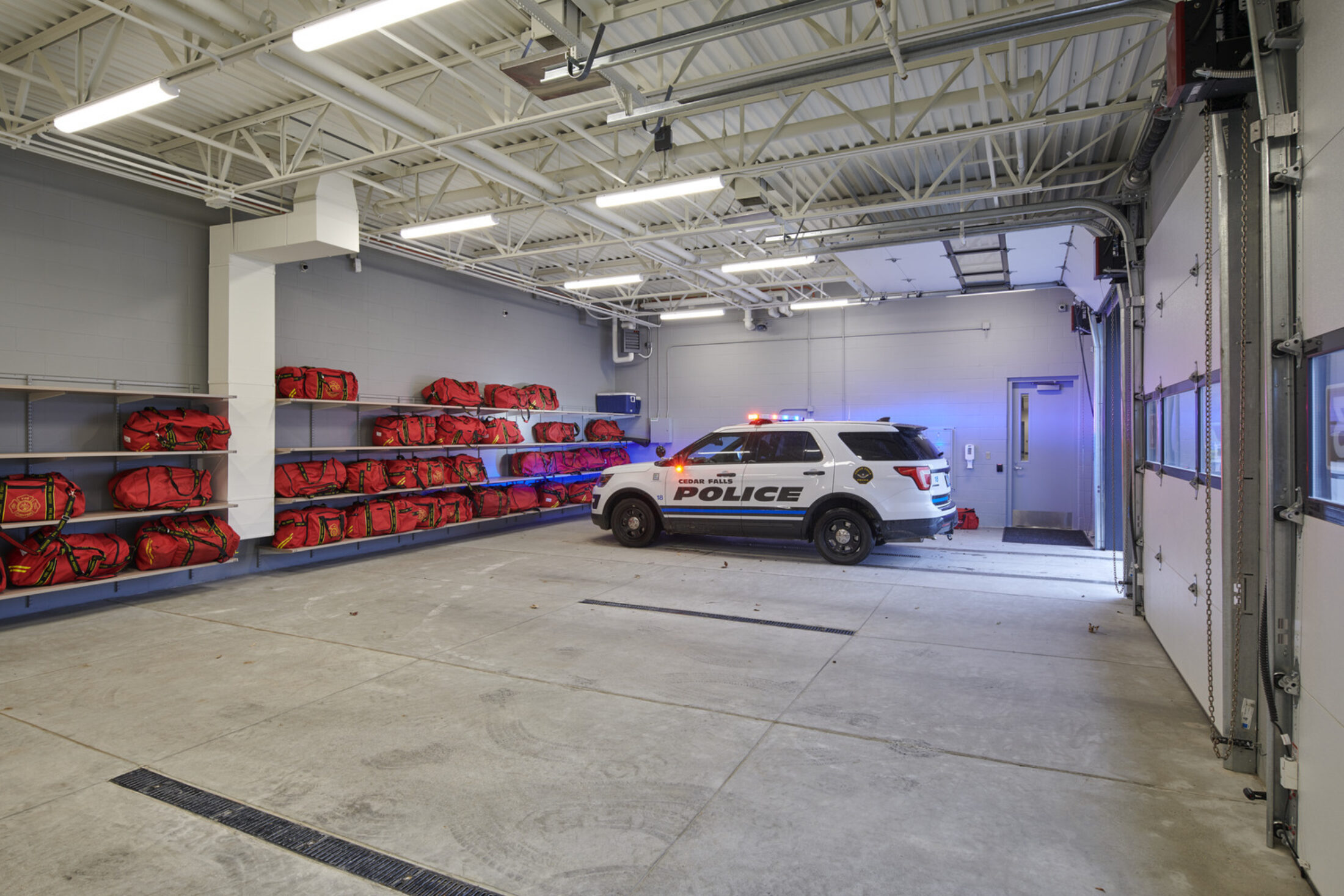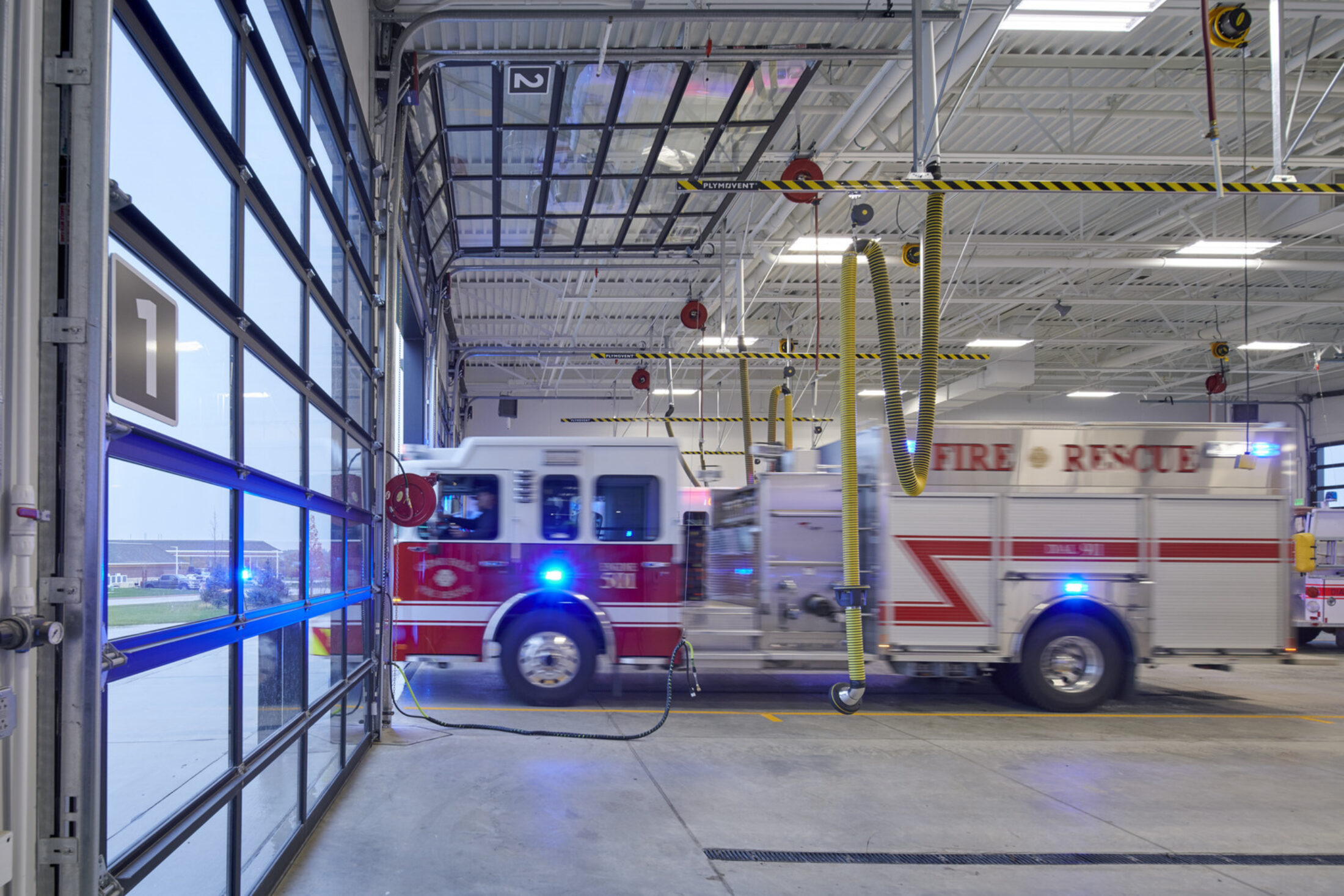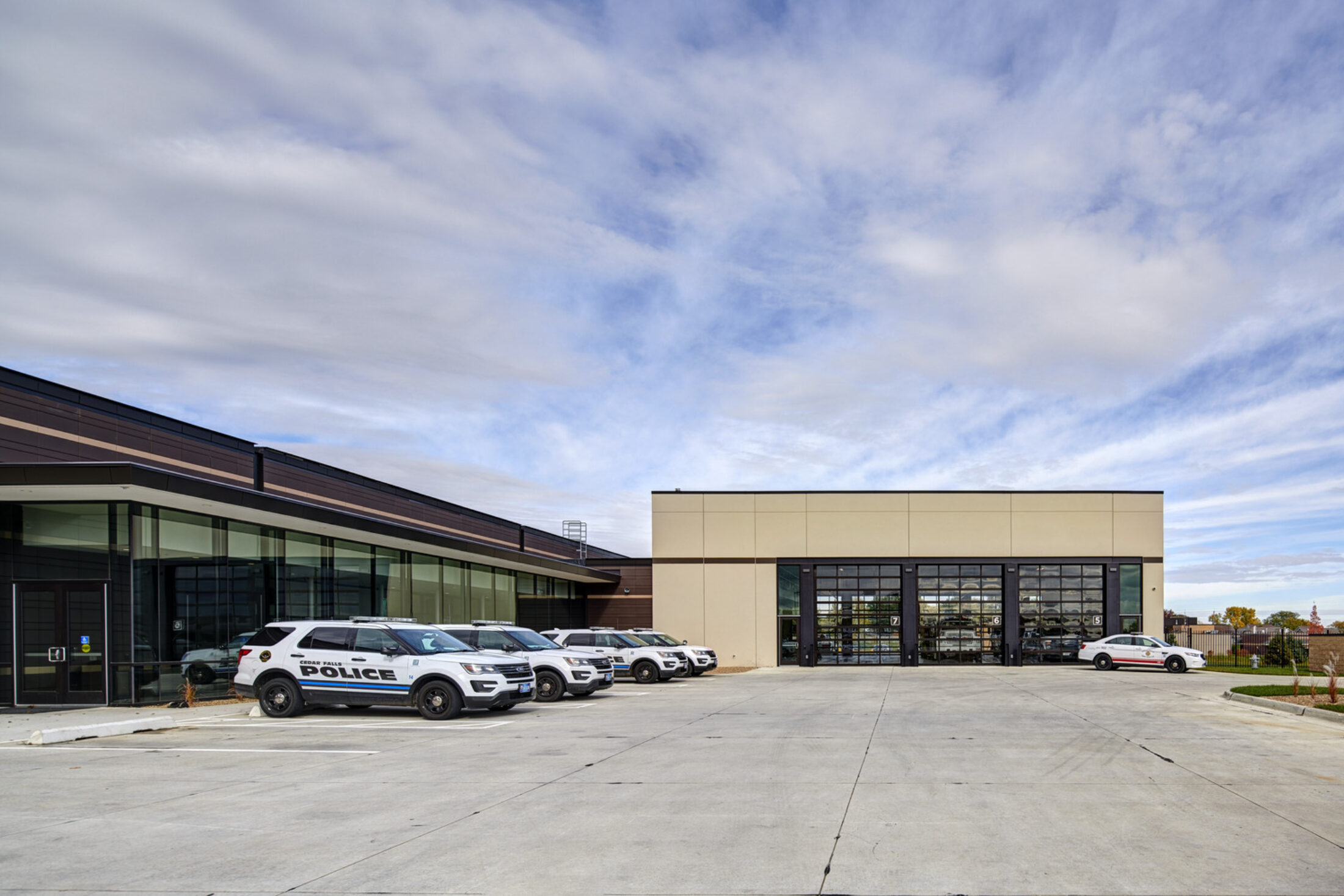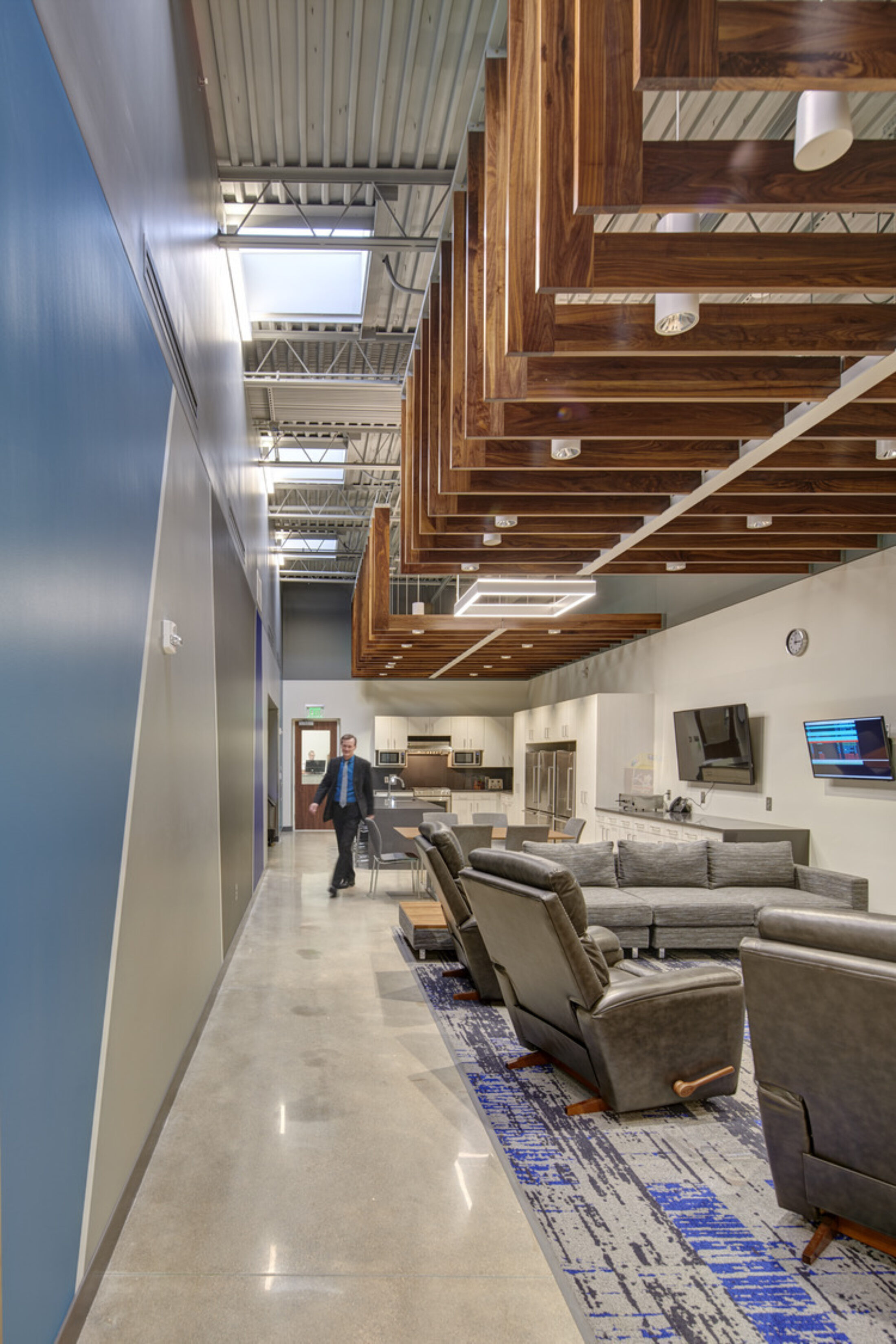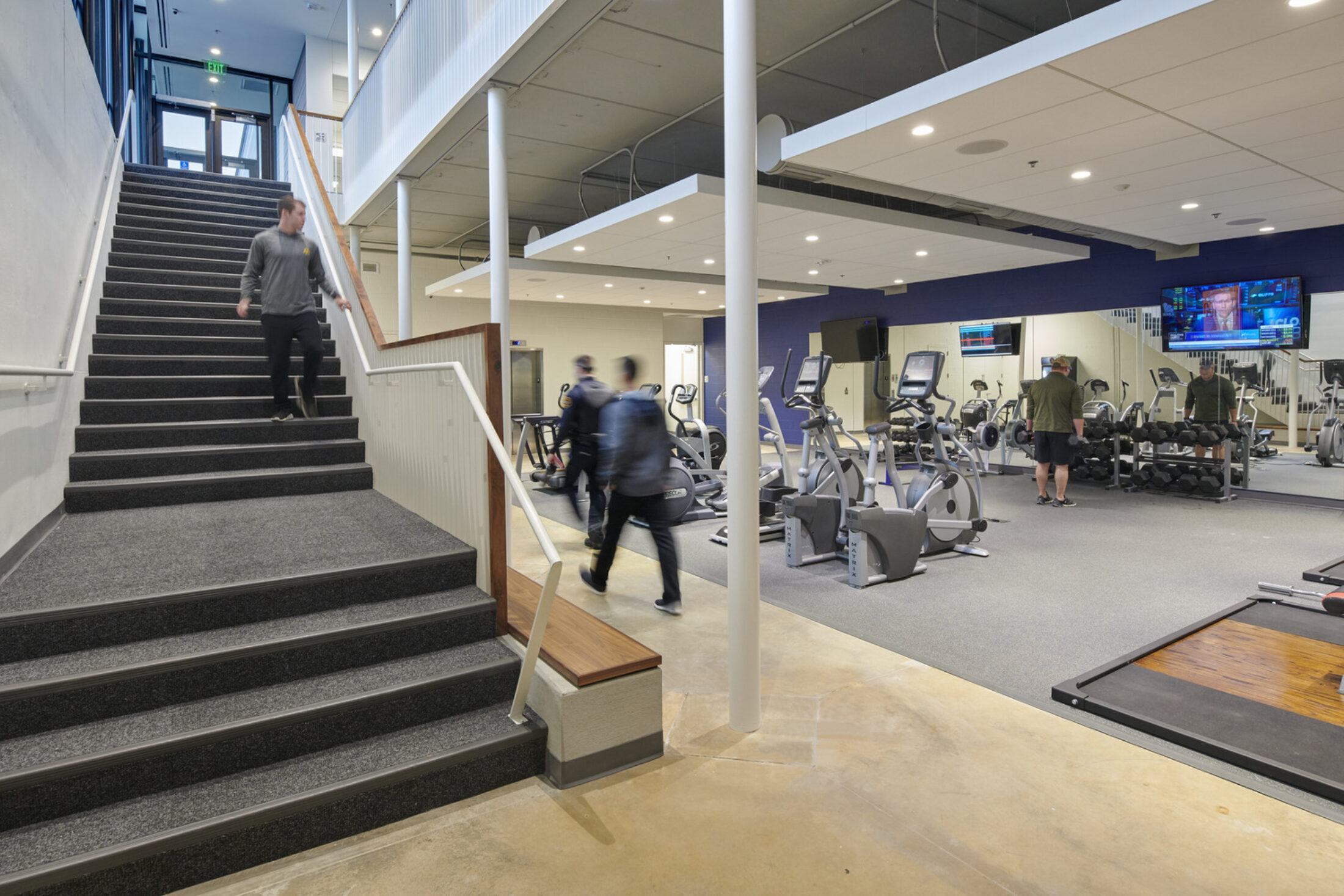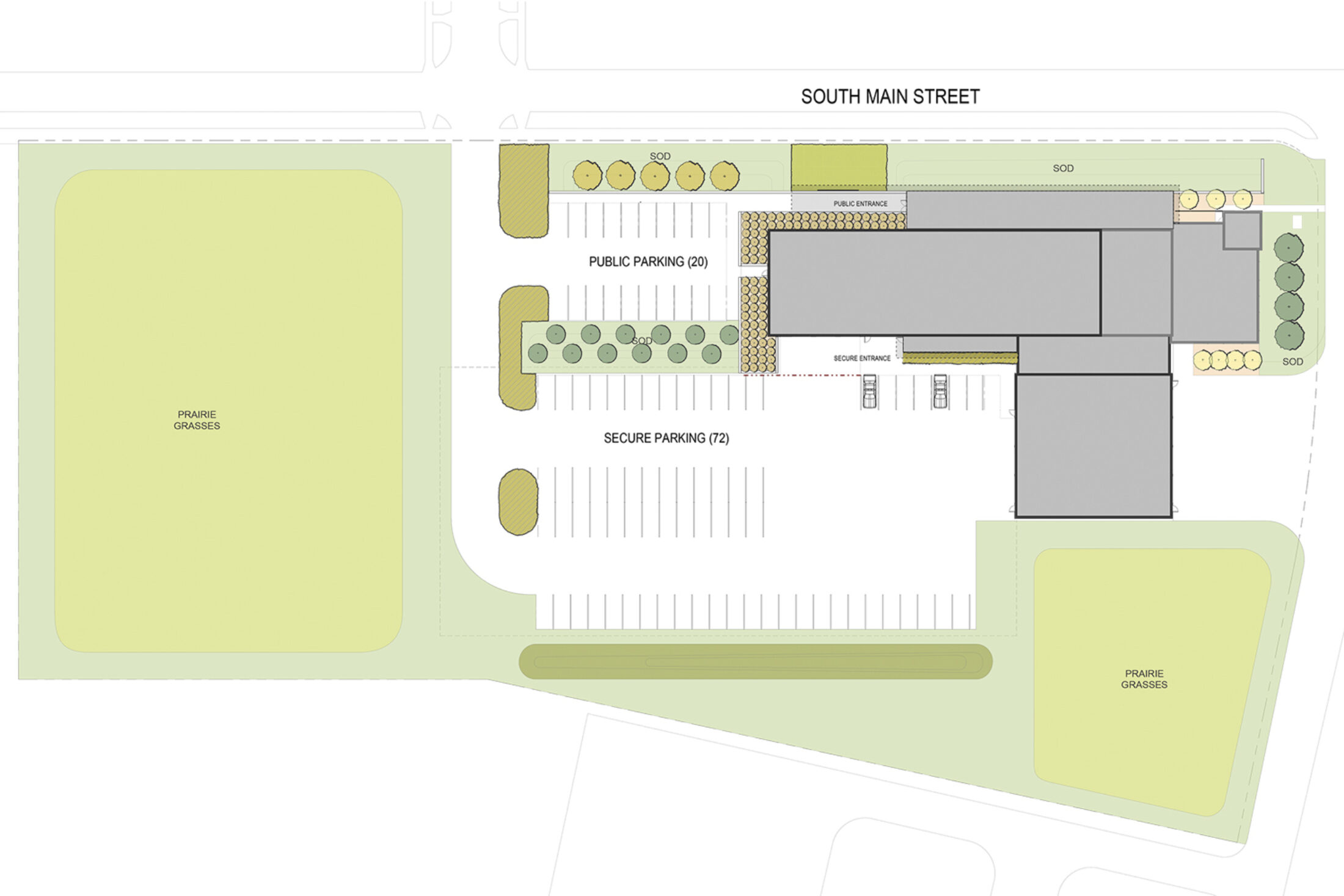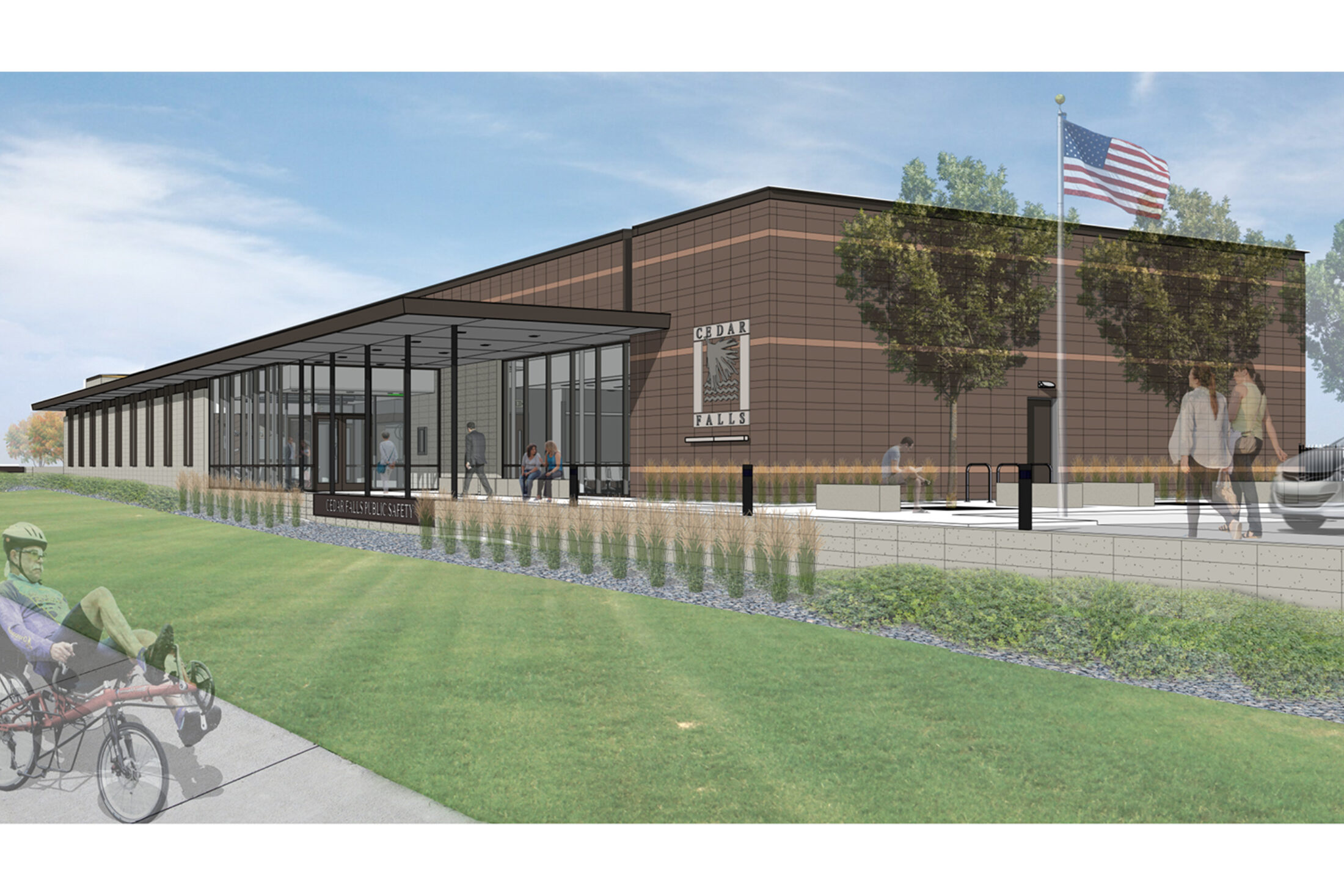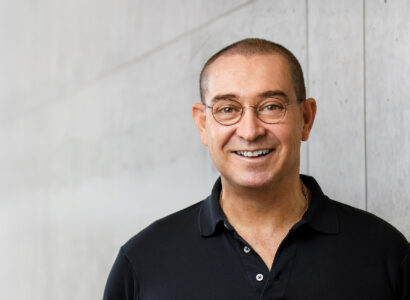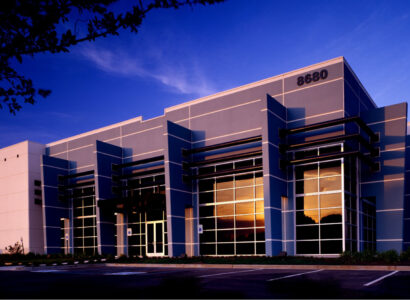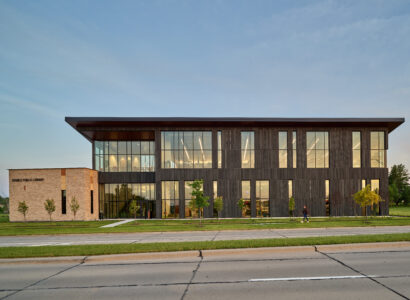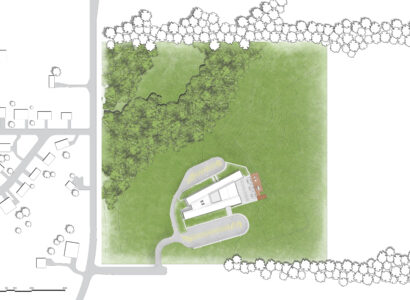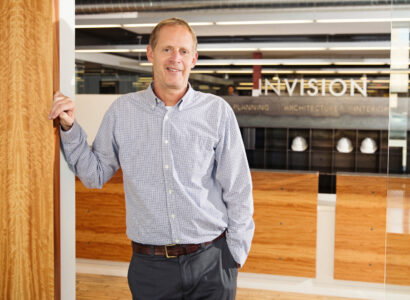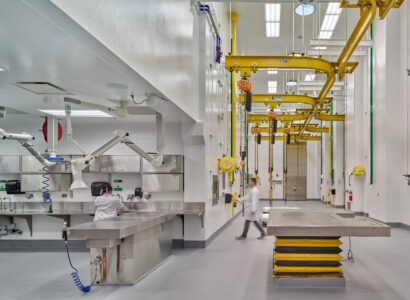The City of Cedar Falls wanted to consolidate police and fire operations into one facility to enhance public safety operations. The City had two main goals for the project: first, to design a facility that was lean and functional, and second, to provide opportunities for program overlap between administration, police, and fire officials without hindering their day-to-day responsibilities.
INVISION met with city representatives to evaluate existing facilities and determine their current and future needs, performing a space needs assessment, analysis of potential sites, master planning of the public safety departments, and the subsequent renovation and addition. The design team found opportunities to overlap program areas that police and fire could share, while still maintaining the individual requirements for each department. Visibility to and from staff into most spaces was also key to promoting connectedness and cohesion throughout the differing functions of the (now combined) city department.
The design incorporated all factions of the public safety department into one cohesive facility with a shared public lobby. Including all the typical spaces utilized by law enforcement and fire departments, the building was organized through a strategy of promoting efficiency and multi-purpose use under the umbrella of Public Safety.
